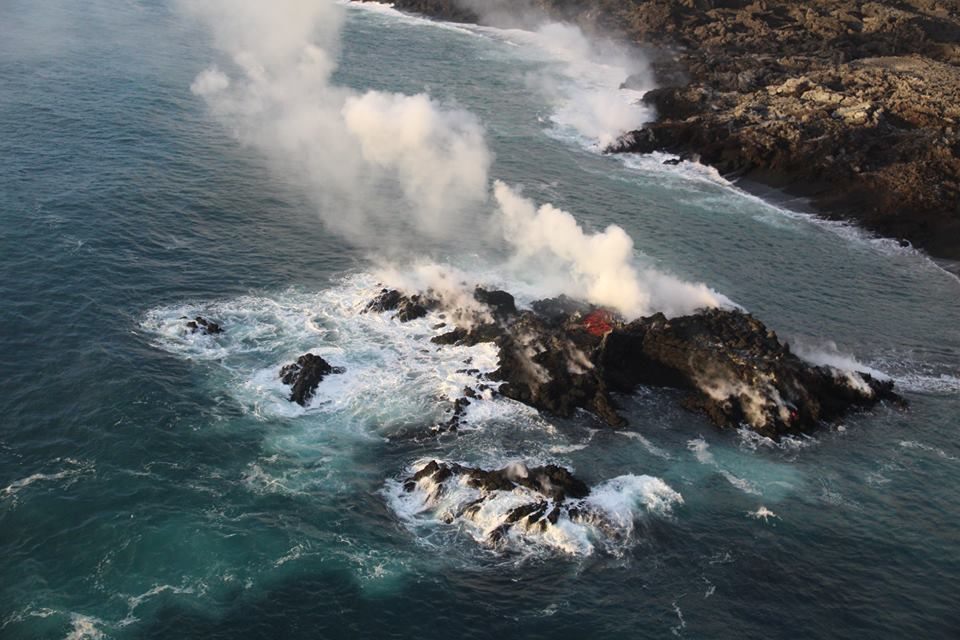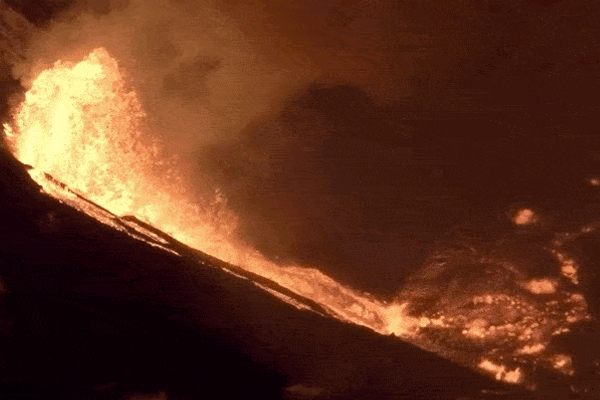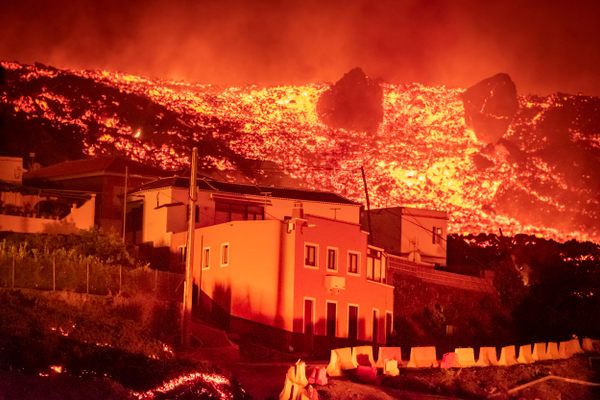A Lava Island Comes Into Being, For a Few Days
Hawaii’s ongoing eruption created new land.

Last week, a small new island was born. It fit the major criteria—surrounded by water and smaller than a continent. The island emerged just a few yards off the coast of Hawaii’s Big Island, formed by the lava that’s been pouring from Kīlauea since May.
Just a few days later, the small island had transformed. By Monday, July 16, according to the USGS, it had become an isthmus.
The island formed near the northern end of the area where lava from a productive fissure has been flowing into the ocean. USGS observers first reported the island’s existence on Friday, when they described it as “a small island…just offshore the northern edge that continues to ooze lava.” At the coast, the lava continues to flow underwater, and most likely, USGS said, the island was formed by pressure in that submerged flow, which pushed a hump of lava up above the water level.

Below the waves, though, that island was still connected to the larger lava flow, and over the weekend, the distance between Big Island and tiny new island was filled in. After a short life as an independent island, this new piece of land became part of a larger one.
Lava often adds new land to Hawaii, and as Motherboard reports, Kīlauea has added more than a thousand acres of land to Hawaii over the past decades. All new “lava extensions” automatically belong to the state.
But they serve an important purpose for everyone living on the island, too. On its own, the little island would have likely disappeared quickly, as the waves eroded it away. On a larger scale, though, that’s happening to all of the Hawaiian islands. New land formed by lava helps extend the life of the island; it’ll still erode away, but it’ll give the former shore a break from the corrosive power of the ocean.



















Follow us on Twitter to get the latest on the world's hidden wonders.
Like us on Facebook to get the latest on the world's hidden wonders.
Follow us on Twitter Like us on Facebook